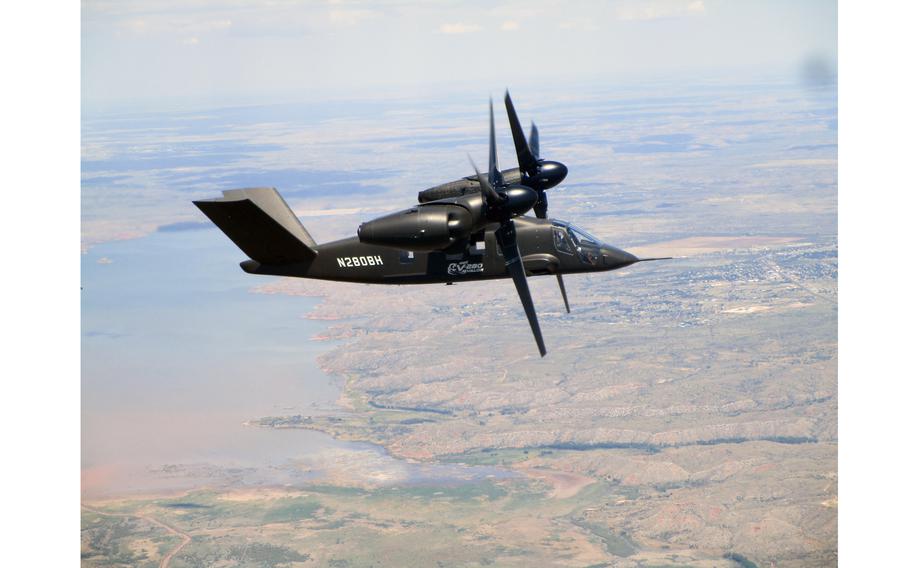
The Bell V-280 technology Demonstrator. (Photo courtesy of Bell)
Battlefields evolve. But one truth never changes: warfighters need speed, reach and agility.
In the early days of the Global War on Terror, the operational environments were unlike anything we’d previously encountered — extreme altitudes, harsh weather, long distances, and no runways. Whether we were flying missions out of Afghanistan, Uzbekistan, or across the vast overwater stretches of the Philippines, our Chinooks were pushed to the edge of their performance envelopes.
During Operation Enduring Freedom, my MH-47 Chinook aircraft was the most capable rotary-wing platform for high-altitude missions. We flew through mountain passes above 20,000 feet, wearing supplemental oxygen and managing fuel, weight and weather just to get to the fight. The terrain and mission demands forced tradeoffs: cargo or range. We often opted for minimal fuel to carry the maximum load, relying on helicopter air refueling (HAR) to extend our reach — complex, coordinated efforts that required external Air Force and Marine tankers.
Meanwhile, my fellow Night Stalkers in the Philippines battled different extremes: overwater flights in low visibility, long transit times, and zero visual horizon. HAR became routine in that theater, too — night after night, in monsoon conditions. Several missions exceeded 700 miles round-trip, with six hours en route before even arriving on target. Fatigue wasn’t a possibility — it was a certainty. We lost an aircraft and crew to the ocean under those conditions. It wasn’t for lack of skill — it was the limits of the platform.
The shortcomings of legacy helicopters aren’t just technical — they’re tactical liabilities. They cost lives when utilized outside of their niche.
Now imagine a platform that can take off vertically from an austere landing zone, fly 300 knots instead of 120, and cover that same 700-mile trip in just over two hours — without the need for refueling. That’s what the tiltrotor Future Long Range Assault Aircraft (FLRAA) brings to the table. It’s not a marginal improvement. It’s a game-changer.
As a retired chief warrant officer 5 and Night Stalker who’s flown combat insertions in Afghanistan, casualty evacuations (CASEVACS) in Iraq, and air refueled over the Sea of Japan at night, I know what it’s like to stretch a platform to its limits. The Chinook is a beast — it can haul crazy amounts of cargo and take a beating — but it’s still limited to rotary wing aerodynamics. You can squeeze only so much lift and speed from traditional rotor blades.
FLRAA changes that equation. Tiltrotor technology offers double the speed and range and improved survivability in contested environments. And make no mistake — the next battlefield will be contested, especially across the Indo-Pacific. Advanced air defenses of our peer and near-peer adversaries and area denial strategies will challenge our crews and equipment. We can’t afford to operate with our legacy platforms when something better is available now.
The FLRAA isn’t just about tomorrow’s fight — it’s about today’s readiness. When the balloon goes up — and it will — our troops must arrive with the speed, reach and protection that only a next-generation tiltrotor can deliver.
Congress, DOD, Army leaders — don’t wait. Warfighters can’t afford to.
Let’s get FLRAA in their hands — now.
Alan C. Mack is a former chief warrant officer 5 who flew CH-47 Chinooks on numerous deployments from Desert Storm to Afghanistan. He was drawn into the special operations community as an MH-47 pilot, where he became Flight Lead and standardization instructor pilot. A Master Aviator, he has more than 6,700 hours of flight time, including 3,200 flown with night-vision goggles. He is the author of the book “Razor 03, a Night Stalker’s Wars.”